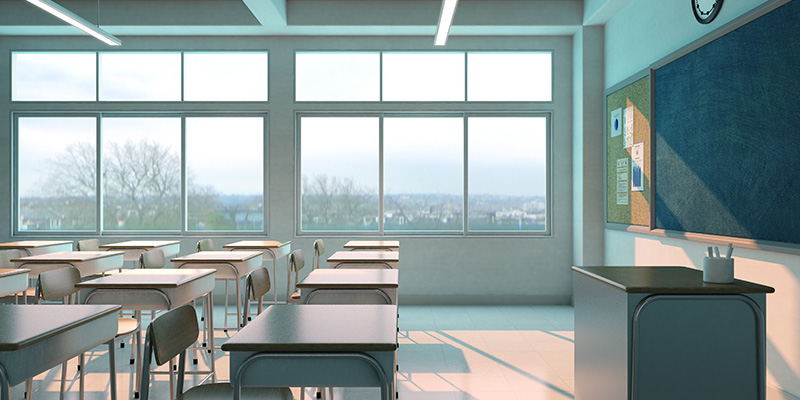
School Buildings and Insulation: Enhancing Learning Environments
Creating a conducive learning environment is a top priority for schools. While factors like curriculum and teaching methods are crucial, the physical environment plays a significant role in student comfort and academic performance. One vital aspect of school infrastructure is insulation. Proper insulation in school buildings can enhance energy efficiency, provide thermal comfort, reduce noise levels, and contribute to a healthier learning environment. In this article, we will explore the importance of insulation in school buildings and the benefits it offers to students and staff.
Understanding the Importance of Insulation in School Buildings
The Impact of Insulation on Learning Environments
Proper insulation has a direct impact on the overall learning experience for students. It helps create a comfortable environment that promotes concentration and engagement. A well-insulated building maintains consistent indoor temperatures, allowing students to focus on their studies without distractions caused by extreme heat or cold. By ensuring thermal comfort, insulation supports better academic performance and student well-being.
Energy Efficiency in School Buildings
Energy efficiency is a significant consideration for educational institutions due to the high energy demands of school buildings. Insulation plays a vital role in reducing energy consumption and operational costs. By preventing heat loss during colder months and heat gain in warmer seasons, insulation minimises the need for excessive heating and cooling. This results in substantial energy savings and a more sustainable approach to managing school resources.
Benefits of Insulation in School Buildings
Thermal Comfort and Energy Conservation
Insulation is essential for maintaining thermal comfort in school buildings. It helps regulate indoor temperatures, ensuring a pleasant learning environment throughout the year. By reducing heat transfer through walls, roofs, and floors, insulation minimises energy loss and the need for constant heating or cooling. This leads to significant energy savings and reduced carbon footprint.
To achieve optimal thermal comfort, schools can choose from various insulation materials. Mineral wool insulation, such as rockwool or glass wool, offers excellent thermal resistance and sound absorption properties. Foam boards, such as expanded polystyrene (EPS) or polyisocyanurate (PIR), provide effective insulation against heat transfer and can be installed in walls, roofs, and floors.
Noise Reduction and Acoustic Comfort
Noise pollution can significantly impact the learning environment. Insulation plays a crucial role in reducing noise transmission within school buildings, creating a more peaceful and focused atmosphere for students and teachers. By absorbing and blocking sound, insulation materials help minimise distractions and improve concentration levels.
To address noise issues, schools can incorporate sound-absorbing materials, such as acoustic panels or ceiling insulation. These materials can be installed in classrooms, libraries, or communal areas to reduce sound reverberation and create optimal acoustic conditions for learning.
Indoor Air Quality and Health Benefits
Insulation not only influences temperature and noise levels but also contributes to better indoor air quality. Proper insulation helps create a barrier against outdoor pollutants, allergens, and moisture infiltration, thus improving the overall health and well-being of students and staff.
When selecting insulation materials, schools should consider options with low volatile organic compound (VOC) emissions. Low-VOC insulation products contribute to healthier indoor air quality, reducing the potential for respiratory issues or allergic reactions among occupants. Additionally, proper insulation helps prevent the formation of condensation and mould growth, ensuring a safe and healthy learning environment.
Specific Areas of Focus for Insulation in School Buildings
Exterior Wall Insulation
Exterior wall insulation is crucial for improving energy efficiency and thermal performance in school buildings. It helps minimise heat loss during winter and heat gain during summer, ensuring a comfortable environment for students and teachers. Cavity wall insulation or external wall insulation systems can be applied, depending on the building's construction and requirements. These insulation methods help create a well-insulated building envelope, reducing energy waste and enhancing thermal comfort.
Roof Insulation
Roof insulation is another critical aspect of creating an energy-efficient and comfortable learning environment. A well-insulated roof prevents heat from escaping during colder months and minimises heat gain during hotter periods. Insulation materials, such as rigid foam boards or spray foam insulation, can be installed beneath the roof surface to provide excellent thermal resistance and enhance energy efficiency. Proper roof insulation also helps prevent moisture issues and extends the lifespan of the roofing system.
Floor and Suspended Ceiling Insulation
Insulating school floors offers several benefits, including thermal comfort, energy savings, and noise reduction. Insulation materials can be installed beneath concrete floors or suspended ceilings to minimise heat loss and enhance acoustic performance. Rigid foam boards or reflective insulation are commonly used options for floor insulation, providing effective thermal insulation and creating a pleasant learning environment.
Conclusion
Insulation plays a vital role in enhancing learning environments in school buildings. From improving thermal comfort and energy efficiency to reducing noise levels and enhancing indoor air quality, insulation offers numerous benefits for students, teachers, and staff. By prioritising insulation in school infrastructure, educational institutions can create healthy, comfortable, and sustainable learning environments that foster academic excellence. Through education and awareness initiatives, schools can also empower students to become advocates for energy efficiency and sustainability, contributing to a greener and more environmentally conscious future.


